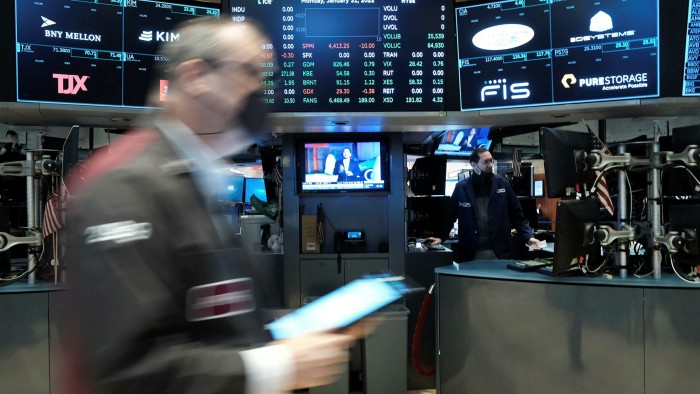State Street cuts fees on $225bn in sector ETFs

Simply sign up to the Exchange traded funds myFT Digest -- delivered directly to your inbox.
Interested in ETFs?
Visit our ETF Hub for investor news and education, market updates and analysis and easy-to-use tools to help you select the right ETFs.
State Street has slashed fees on 11 sector ETFs with $255bn in assets, a recent disclosure shows.
The group cut the expense ratios of each of these funds by 2 basis points to 10 bp, a filing shows. The cuts came out of the funds’ distribution fees.
ETFs typically do not charge 12b-1 or other distribution fees. However, the 12b-1 fees on the State Street funds were instituted more than 20 years ago to incentivise broker-dealers to consider them, said Todd Rosenbluth, head of ETF and mutual fund research at CFRA Research.
The fee structure “provides clarity on how the expenses of the fund[s] are allocated and has served investors well since 1998”, Matthew Bartolini, head of SPDR Americas research at State Street Global Advisors, wrote in an email.

This article was previously published by Ignites, a title owned by the FT Group.
The sector ETFs’ assets rose because of strong US equity markets and inflows into the funds, State Street said.
The manager’s sector ETFs drew in $21.3bn in 2021, according to Morningstar Direct. The largest of State Street’s sector ETFs — the $52bn Technology Select Sector SPDR Fund — raked in $1.1bn last year, the database shows.
Other SPDR sector ETFs include those focused on energy, financial services, consumer staples and real estate.
The sector ETFs were highly liquid, which made them appealing to retail and institutional investors, Rosenbluth said.
The fee cuts on the State Street sector ETFs brought them in line with similar offerings from Vanguard, he added.
Vanguard also has 11 sector ETFs, according to its website. Most of the Pennsylvania-based fund giant’s sector funds charge 10 bp, its website shows. Vanguard’s $174.8bn in sector ETFs drew in $17.9bn last year, according to Morningstar Direct.
However, even with the cuts, State Street’s sector ETFs would be more expensive than Fidelity’s, which cost 8 bp, Rosenbluth noted.
Fidelity has 11 sector ETFs, with a combined $21.9bn in assets under management. Together, the ETFs drew in $2.6bn last year, according to Morningstar Direct.
Across fund shops, sector ETFs are preparing for the impact of certain tweaks to the industry classification system by S&P Dow Jones Indices and MSCI. Almost 1,000 large-cap companies could be reclassified under the Global Industry Classification Standard, MSCI said. The index providers have said they are welcoming comments on the proposal until February 19 and plan to finalise the changes by the end of March.
State Street, Vanguard and BlackRock’s sector ETFs track indices based on GICS. Fidelity also uses the system as one way to define the stocks in its portfolios.
*Ignites is a news service published by FT Specialist for professionals working in the asset management industry. It covers everything from new product launches to regulations and industry trends. Trials and subscriptions are available at ignites.com.

Click here to visit the ETF Hub

Comments